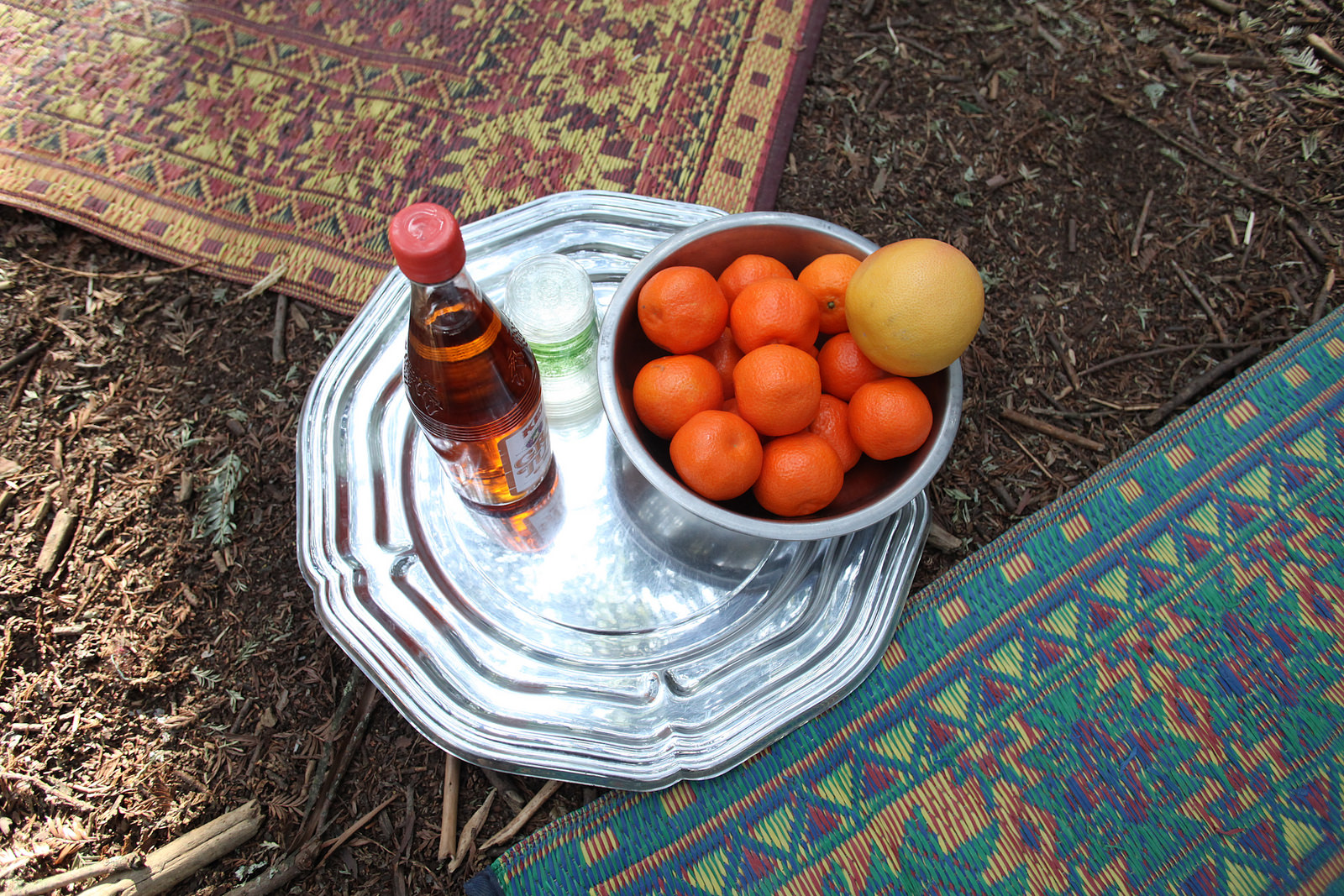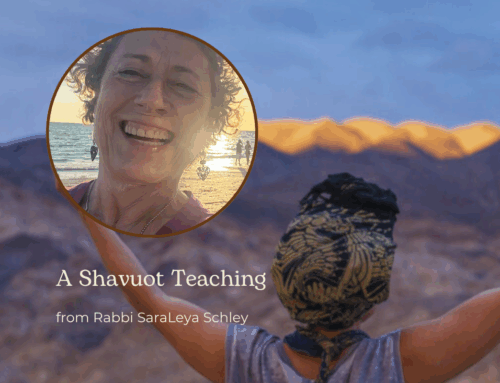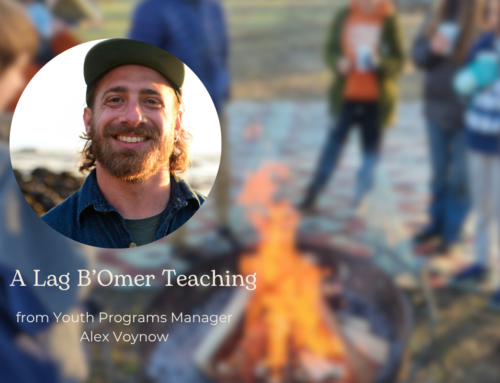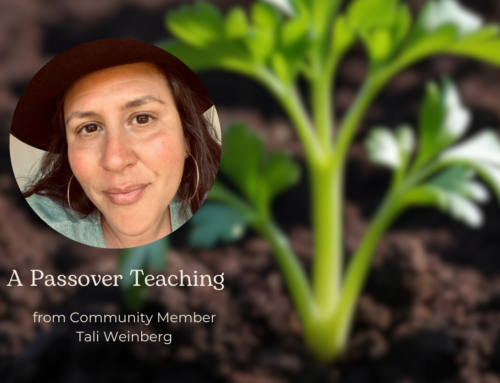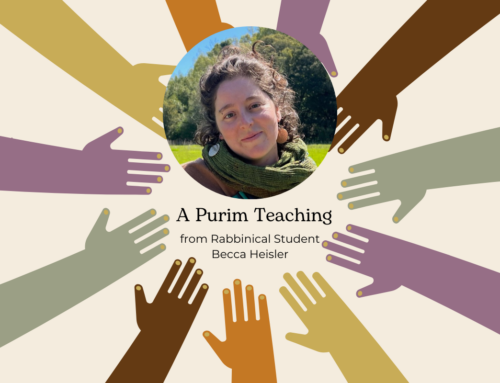Tu B‘Shvat: The Beginning of Liberation
8 Sh’vat 5775 | January 27, 2015
As Ecclesiastes explains, “For everything, there is a season” (Ecc. 3:1). Pause and take a look outside. Look closely at the trees. What is beginning to be revealed at this season?
The buds on seemingly dormant trees and shrubs bulge with new life. Almond blossoms in Jerusalem are opening; willows buds here in Berkeley are bulging. Movement and change is afoot, hidden within roots, trunks, and bark. Although the solstice gateway to winter opened just over one month ago, Tu B’shvat marks a powerful initiation of new beginnings.
This energetic shift in nature coincides with this week’s Torah portion, Be’shallah, where Pharaoh lets our people go, where we are released from over 400 years of narrowness and slavery and make our mythical passage through the parted Red Sea waters. The splitting of the sea is like the sprouting of the Garden of Eden – we sing our way to freedom through a magical field of blossoming fruit trees backed by standing walls of suspended water (Exodus Rabbah 21:10). This Exodus moment, of course, is just the beginning of a long journey and process of liberation.
Tu B’shvat, the new year for trees, reminds us of our human liberation process by marking the seasonal re-awakening of nature. The Torah explains this interconnection: “A person is like a tree in the field” (Deut. 20:19). Just as trees undergo cycles of growth and dormancy, laying new rings of growth year after year, so too we humans undergo cycles of awakening. Referring to the practice of making a blessing on first seeing spring blossoms (Mishneh Brachot 43), the Gerrer Rebbe (early 19th century Rabbi Yitzchak Meir Rotenberg-Alter) explains: “Tu B’shvat begins a process when it’s possible to renew oneself.” The act of acknowledging and blessing the renewal in nature has the power to catalyze our own internal growth.
As Tu B’shvat approaches, what do you see in this season of renewal? Can you perceive the bulging buds of your own life? Can you see ahead to how the liberation journey of Passover might apply to your life? What intentions might you set as the sap begins to rise to support your liberation and blossoming this coming spring?
As I return from my Jerusalem study sabbatical — having gained new Torah study skills and connections to ancient lands and peoples — I feel new buds of inspiration to more deeply learn the ancient wisdom of our traditions in order to continue building the bridge to an earth-connected Jewish life for today. In particular, I am newly inspired to delve deeper into the wisdom of Chazal, the early rabbis who crafted the Mishneh and Talmud.
In the aftermath of the destruction of the Second Temple nearly 2,000 years ago, for roughly a 300-year period the rabbis documented our oral tradition into what became the Talmud, contrary to prohibitions of doing so (BT Gittin 60). After a period of intensive Talmud study, I see this documentation as a bold move to preserve important parts of our indigenous culture — wisdom that we carried from a time when we were more connected to land and each other. This snapshot into important parts of our ancient oral tradition, what many call our “portable homeland,” offers a window and link into profound values and life ways of our people prior to the disconnection that came with exile. Nearly 2,000 years later, we have the opportunity to replant the seeds of this “portable homeland” back into the earth, wherever we are.
As we enter this season of awakening, I offer my intention and commitment to continue the project of awakening ancient earth-based Jewish traditions and bringing them alive through our village-building work. As Rabbi Zalman Schacter-Shalomi z”l explained in his seminal work Paradigm Shift, globally we are entering into a phase of profound cultural transformation. Our endeavor to renew ancient earth-based traditions is an expression of this paradigm shift, which feels on the cultural level like the rising of the sap of Tu B’shvat and the beginnings of liberation we read in the Torah this week. We are just at the beginning of a long culture-repair journey, but what a worthwhile and beautiful journey of which to be part.
I am glad to be home in California and look forward to celebrating with you at Tu B’shvat in the Redwoods, Passover in the Desert, and wherever our paths bring us together next as we continue this journey to discover, renew, and reconnect to our ancient roots. Until then, I wish you a very sweet and renewing Tu B’shvat!

